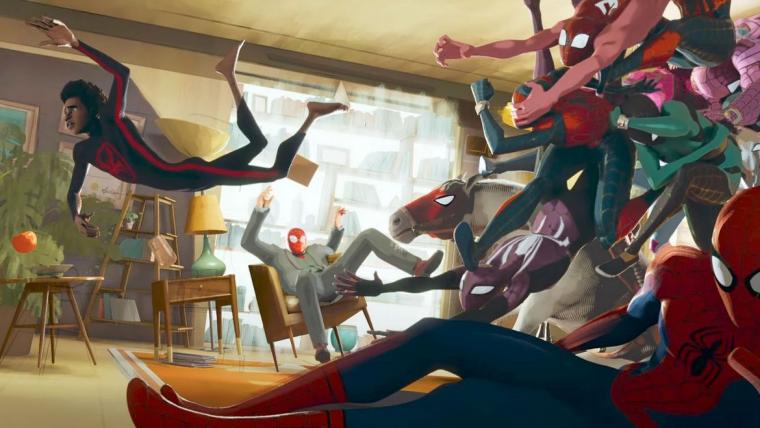
Spider-Man: Across the Spider-Verse
SPIDER-MAN: ACROSS THE SPIDER-VERSE
See enough movies over enough decades – five-plus decades, in my case – and you may begin to wrongly think that cinema no longer has the ability to astonish you. But while I'm hardly going to make the case for the superhero adventure being on par with, say, Citizen Kane or the first two Godfathers, or even Richard Linklater's 2014 Boyhood, I'm not sure that any film released since that latter title has thrilled and awed me quite as profoundly as Spider-Man: Across the Spider-Verse.
In general form, this singular achievement by directors Joaquim Dos Santos, Kemp Powers, and Justin K. Thompson is kind of everything I've grown to hate, or at least be bored by, regarding summer-blockbuster season: It's a big-screen comic book, and it's a sequel, and it's clearly designed to make audiences antsy for another sequel – we aren't even given a cathartic climax, much like we weren't in Marvel's Avengers: Infinity War. The difference, though, is that the overwhelmingly enjoyable Across the Spider-Verse is a wholly satisfying standalone experience despite the planet-sized cliffhangers left in its wake, delivering so much excitement, hilarity, narrative pleasure, eye-popping detail, and deep emotion that you feel you just might implode with happiness. You don't just want to watch this movie. You want to devour it, morsel by delicious morsel, and immediately line up for seconds.
In last week's Little Mermaid review, I mentioned that one of the reasons the film was nearly an hour longer than its animated forebear boiled down to basic physics, as humans and “realistic” CGI animals simply can't move as quickly as their hand-drawn equivalents. Were actual performers recruited to re-enact the motions of Across the Spider-Verse's most hyper-kinetic sequences, the movie would last roughly 13 hours (and its visual-effects budget would no doubt escalate to billions). Amazingly, though, the relentless pacing and cutting of the showstopper set pieces here doesn't lead to a headache or worse. This is partly due to the directors and screenwriters Phil Lord, Christopher Miller, and David Callaham knowing precisely when and how to dovetail the frenzied action with scenes – sometimes quite-long scenes – of introspection and quiet respite; Across the Spider-Verse is practically symphonic in its blend of disparate yet complementary themes and variations. Yet the occasional too-much-ness also isn't aggravating because the movie effectively teaches you how to view it as it goes along – like a kid entranced by a particularly enthralling comic book, eyes darting with anticipation from panel to panel, turning pages with ever-increasing eagerness. While there's a lot of melancholy on display over the course of two hours and 20 minutes, I'm not sure I ever stopped grinning, except maybe when “To Be Continued” flashed on-screen. And my disappointment certainly didn't last.
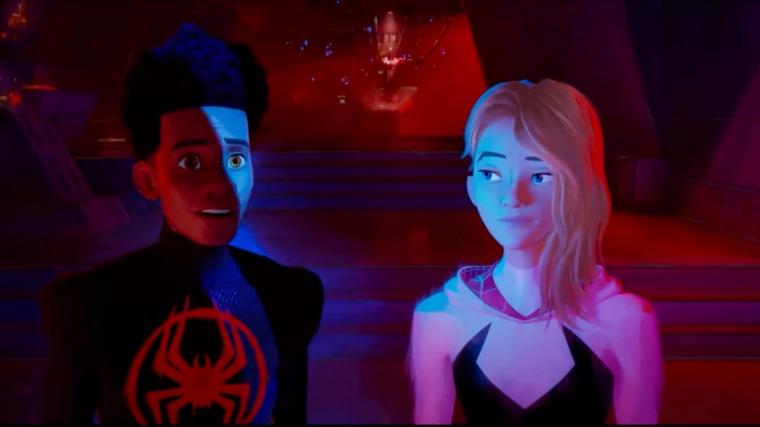
Expanding the hero's journey of Brooklyn teen Miles Morales (beautifully voiced, again, by Shameik Moore), the film takes place a year after the events of 2018's Spider-Man: Into the Spider-Verse, and the world-saving plot this time involves a wannabe über-villain who calls himself the Spot (Jason Schwartzman) and has the powers to transport and open portals into alternate dimensions. In a nice touch, at least at first, the Spot is even more awkward as an adversary than Miles was as a fledgling crime-fighter – we're introduced to the whiny bad guy in his pathetic attempt to steal a bodega ATM – and his first scuffle with Miles' Spider-Man is pure slapstick comedy. Others, however, aren't laughing, and it's not long until Miles is visited by his friend and unrequited crush from another universe Gwen “Spider-Woman” Stacy (Hailee Steinfeld), who has joined a team of fellow supers that travels the multiverses in the hopes of defeating the Spot before his nefarious plans come to fruition. That's a ridiculously over-simplified synopsis and doesn't take into account at least a half-dozen additional storylines, to say nothing of the 20-minute prelude that's focused entirely on Gwen. But one of the chief surprises of Across the Spider-Verse is that, despite the threat of inter-dimensional cataclysm, our heroes' skirmishes with the Spot aren't close to being of central importance – not when the fate of Miles' dad (Brian Tyree Henry) is on the line.
There's so much to relish on visual, aural, and vocal-performance levels in this movie that I hardly expected its most gripping element to be thematic. Yet it turns out that what truly drives Across the Spider-Verse isn't the arrival of the Spot, but rather the exploration of canon theory – the idea that despite the multiverses, certain events and outcomes are preordained and must come to pass. If you've seen the trailer, you know that the film is positively teeming with Spider-Beings, one of whom is Issa Rae's pregnant biker, one of whom is Karan Soni's Indian hottie, and one of whom is Daniel Kaluuya's pissed-off British punk rocker. (In a riotous throwaway, Kaluuya's Hobie Brown stares at a black hole left by the Spot and sneeringly deems it “a metaphor for capitalism.”) Adding the Spider-animals, Lego Spider-Man, visages of Tobey Maguire and Andrew Garfield, and too many others to catch on a first viewing, they're an unimaginably diverse lot. Yet they all share canonical similarities. All were bit by radioactive spiders. All of them lost an Uncle Ben. And in all of their worlds, a police captain close to their hearts was killed – and Miles' police-officer dad has just been promoted to captain. As explained to Miles by Oscar Isaac's “ninja vampire” Spider-Man 2099, this means the teen's father must die, too. Miles, however, refuses to accept the fait accompli, and in defying the laws of canon, our hero might prove a bigger threat to the fabric of existence(s) than the Spot will ever be.
What a phenomenal setup! And what a rich one in terms of the thematic terrain it covers: free will versus determinism; bitter experience versus youthful hopefulness; head versus heart. Miles' plight is both existential and fiercely flesh-and-blood, and this dichotomy gives all of the stunningly choreographed and animated action added reams of feeling. You don't merely marvel at the goings-on; you legitimately care. It would have been enough for Across the Spider-Verse to provide the cleverness, poignancy, and presentational wizardry of its predecessor. But like superior franchise sequels ranging from The Empire Strikes Back to X2: X-Men United to, yes, Sam Raimi's Spider-Man 2, everything that we fans loved about the original is both super-sized and emotionally expanded here, and the effect leaves us simultaneously wiped out and exhilarated.
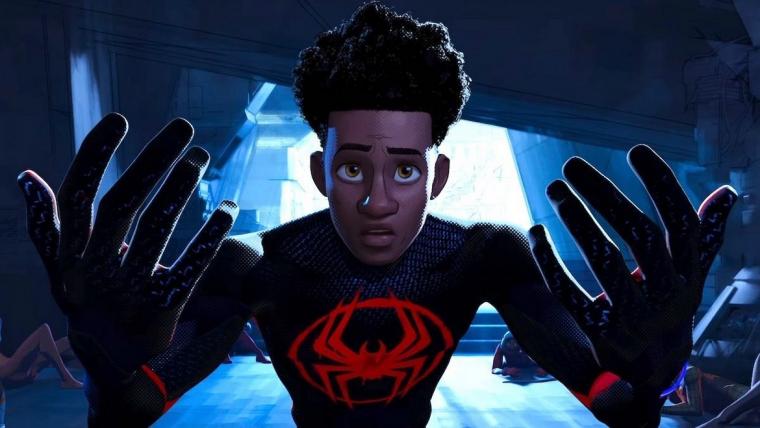
Yet not all of that exhilaration is tied to the genre's requisite crash and boom. The initial reunion between Miles and Gwen, with the pair sitting upside-down while taking in the New York skyline, is almost unspeakably lovely, as is the shot in which Miles (while invisible) and Gwen all but mirror the iconic kiss in the rain between Tobey Maguire and Kirsten Dunst. Gwen's late-film reconciliation with her own police-officer dad (Shea Whigham) is a cascade of lavenders and pinks and pastels; it feels like we're seeing the interior of the young woman's very soul.
And I truly don't want to know how Dos Santos, Powers, and Thompson – like the first film's directing triumvirate of Bob Persichetti, Peter Ramsey, and Rodney Rothman – elicited their cast's extraordinarily naturalistic vocal performances. But I know that I could have watched the rooftop cookout scene for hours on end with no complaint, soaking in Henry's gruff amiability and the maternal radiance of Luna Lauren Vélez with as much delight as I got from the astounding array of animation styles, the background wit of downtown Mumbattan, and the finale (or rather “finale”) that managed to suggest the climaxes to Avengers: Infinity War, Dune: Part One, and Twin Peaks: The Return. I fully expect the more-than-deserving Spider-Man: Across the Spider-Verse to win next year's Best Animated Feature Oscar, just as Into the Spider-Verse did in 2019. In a fair world, a Best Picture win wouldn't be out of the question, either.
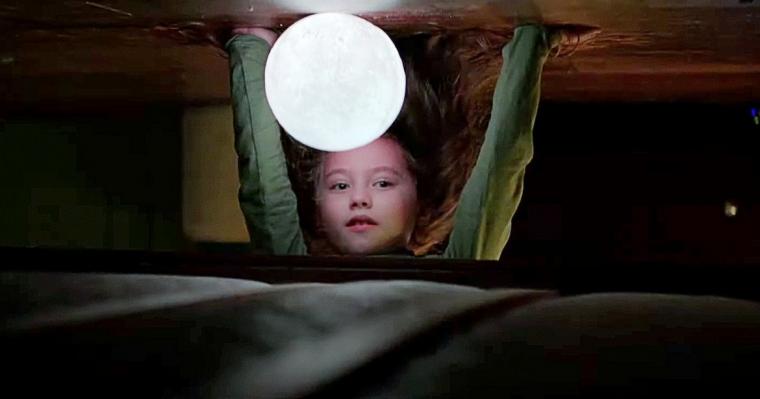
THE BOOGEYMAN
Originally published in 1973 and included in the author's 1978 collection Night Shift, “The Boogeyman” is one of Stephen King's most disturbing short stories, and a work so terrifying that it practically demands the impossible: that you read it with your fingers almost completely covering your eyes. Even though I only read it once or twice in my early teens, I've found it impossible to get King's gut-wrenching tale of child murder out of my head, and what's initially fascinating about director Rob Savage's solid screen version of The Boogeyman – which boasts a script by Mark Heyman and Bettendorf natives Scott Beck and Bryan Woods – is that it's effectively an adaptation and a sequel at the same time.
If you found yourself similarly traumatized by King's short fiction, you'll likely recall that the whole of this tale unfurled in a psychiatrist's office, as former family man Lester Billings described to his doctor how his three young children were successively murdered by an unseen presence hiding in the closet, each of his kids shrieking “The Boogeyman!” right before their grisly ends. For nearly the story's entirety, the suspicion exists that Lester himself may have committed the crimes. And that certainly seems to be a possibility when, in the film version, Lester Billings shows up to recount his tragic tale to Chris Messina's therapist Will Harper, given that Lester is played by David Dastmalchian, a perennially underrated character actor who should always be a producer's first call when casting a gloriously twitchy potential psycho. But Dastmalchian, alas, is only around for a single scene, and after his terrific brief performance and departure from the narrative, The Boogeyman's thrust becomes clear: There was indeed an unseen presence in the closet, and Lester unwittingly brought it to the Harper house, and Will's daughters Sadie (Sophie Thatcher) and Sawyer (Vivien Lyra Blair) are next on its kill list.
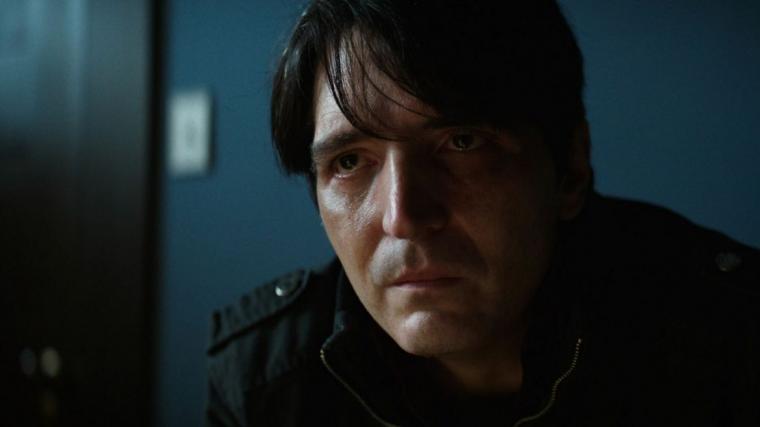
This is a really artful treatment of King's material. Beyond the cleverness of its design as an adaptation/sequel, the script does an admirable job of linking a monster's arrival to the trauma experienced by the Harpers – the mom of the clan having recently died in an auto crash – and the professional “healer” Will's unwillingness or inability to help his children cope with their grief. For much of the film, the Boogeyman is both a physical threat and a metaphorical one, and the conceit plays well into Beck's and Woods' understanding of the power of eerie silence so memorably demonstrated in A Quiet Place. Savage's direction is never sharper than when we're aware that some thing is silently lurking in the Harper girls' vicinity without their visual awareness, with young Sawyer's glowing, rolling orb – an item that should immediately shoot to the top of every scared-of-the-dark kid's Christmas wish list – the only thing protecting the girl from a nightmarish demise.
Ultimately, unfortunately, the unseen is seen, and after we're given a visual (if still shadowy) reveal of the fanged meanie from the closet, it ceases to be frightening. So does Savage's entire movie, which proceeds to trade unnerving quiet for ultra-loud shrieks and roars, climaxing with perhaps the most depressingly overused visual cliché in the horror-flick playbook. (It's the unspoken equivalent of that eternally tiresome movie-ending line: “Let's go home.”) Yet until it goes off the rails, The Boogeyman is a thoroughly decent genre offering. Messina is back in prototypical normal-dude mode following the highs of his wondrously profane Jordan agent in Air, but the actor is always agreeable company, and Blair and especially Thatcher are excellent as the Harper daughters, the latter suggesting an Emma Stone whose sadness is momentarily eclipsing her natural buoyancy. The slow deterioration of the Harper home's interior is smartly, subtly rendered, implying a long-gestating cancer conceivably without treatment. And Tony-nominated stage staple Marin Ireland delivers a knockout cameo as Lester's wife, providing this slow-boil saga's one giggly creep-out with her hushed declaration to Sadie: “It's … right … behind … you.” All told, Savage's film is a worthwhile PG-13 freakout, and a fine argument for his helming of other adaptations of short stories by Stephen King. Unless it's “The Jaunt.” If “The Boogeyman” traumatized me, that one annihilated me.
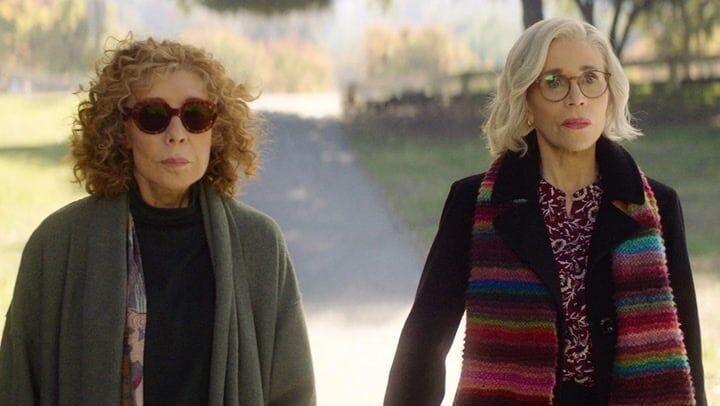
MOVING ON and BEING MARY TYLER MOORE
While spending much of this past weekend with my folks, my mother gave me one of the sweetest compliments, telling me, “You always know what movies I'll like!” Not to belittle her kind words, but finding films that she'll probably adore isn't tough: All you have to do is make sure that said films star Jane Fonda and/or Lily Tomlin – preferably “and.” (This is a woman who subscribed to Netflix pretty much only to watch Grace & Frankie.) So when, at a screening of the Fonda/Tomlin duo's minor hit 80 for Brady this past February, we saw a preview for a new Paul Weitz comedy titled Moving On that also starred Fonda and Tomlin, we eagerly anticipated its cineplex debut, knowing that Mom would love it sight unseen. It never appeared, and only recently became available for streaming rental and purchase. Through Prime Video, Mom and I finally watched it together on Saturday. She liked it because of Jane and Lily. I didn't like it despite Jane and Lily. But we both understood why writer/director Weitz's movie never got a significant nationwide release.
Let's cut to the chase: It's really, really hard to get comic mileage out of rape. Yet Moving On is all about Fonda's Claire vowing to kill her attacker of many decades prior, and preparing to do so with the aid of her collegiate pal Evelyn (Tomlin), and we're asked to laugh when, say, Claire's murder-weapon knife is presumed by a bystander to be meant for the cutting of brownies, and the gun she procures for the murder turns out to be a flare gun. (Claire opts to give it a literal shot regardless.) I mean … maybe this could be funny? Conceivably with Pedro Almodóvar or David O. Russell or the Coen brothers at the helm? But with Fonda giving a balls-out dramatic performance that culminates in a wrenching recollection about what Malcolm McDowell's hateful swine Howard actually did to Claire, there's nothing remotely funny about the woman's situation, and all of the sardonic-Lily guffaws and Richard Roundtree charm and cutaways to adorable dogs can't do anything to amend that.
Weitz has made several pleasant movies in the past and even a rare good one (2015's Grandma, which also starred Tomlin). But while the leads are reliably wonderful, Moving On's tone is wrongheadedly all over the map, and the film immediately gets points docked for being so aggressively PC that, if the film were a bigger hit, it would likely stand as the fundraising poster child for every Far Right coalition in America. One of Claire's exes turns out to be Roundtree's Ralph, and they re-consummate their late-in-life love. Ralph's daughter and grandchildren, all three of whom are unfailingly well-mannered and polite, are fully supportive of the mixed-race union. Evelyn is an out-and-proud lesbian who reveals, at the woman's funeral, that she had a years-long sexual relationship with Howard's wife. A friendly trans kid shows up at Evelyn's retirement-home dwelling to again try on shoes and earrings. The child is of Hispanic descent, and one of his concerned parents is in a wheelchair. Despite my own liberal tendencies, my brain began to ache at the number of stereotypically liberal talking-point boxes being dutifully checked off here, and the only human subset Weitz appears to have no empathy for is the conservative, late-middle-aged white man – a deserving nemesis, to be sure, but a target made lazily easy to loathe due to McDowell's cartoon villainy. I'm glad Mom enjoyed 85 minutes in the company of two of her favorite movie stars. But moving on … .
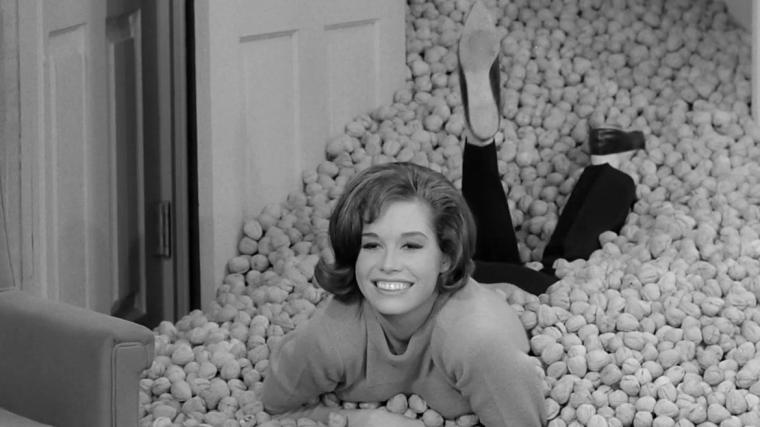
Another route to my mother's movie-loving heart, I knew, would be a feature-length documentary on one of her – make that everyone's – favorite TV stars. So it was with great delight that I introduced her to the HBO Max (sorry … Max) doc Being Mary Tyler Moore, which debuted at the end of May, and which I had already seen a few days prior. Watching it with Mom this time, thankfully, I managed to refrain from sobbing. It's hard to argue that director James Adolphus' two-hour love letter wouldn't have been improved by the addition of another 60 minutes, as there's no mention of her Emmy-winning '90s portrayal in Stolen Babies or her post-plastic-surgery years that made us all feel sad for her, or even much about the months and years leading to her 2017 passing. But those inclusions would all be bummers, and this documentary is an almost non-stop high, boasting copious scenes from The Dick Van Dyke Show and The Mary Tyler Moore Show alongside off-screen reminiscences from the likes of James Burrows, James L. Brooks, Julia Louis-Dreyfus, Reese Witherspoon, and Moore's widowed husband Robert Levine.
The tragic death of Moore's son is duly acknowledged, as is the bitter irony of his passing coinciding with the release of Ordinary People, and we're frequently shown that no one was harder on Moore than Moore herself, who tells James Lipton, in a late-career interview, that she'll always only think of herself as “a failed dancer.” But for this viewer whose formative years were spent watching The Mary Tyler Moore Show every Saturday with his grandmother, and for that kid's mother who still has fond memories of the performer's unseen Gal Friday role as Sam on the '50s TV yarn Richard Diamond, Private Detective, Being Mary Tyler Moore is utter joy, never more so – at least for me – than when its subject quietly yet unmistakably demolishes David Susskind's cringey sexism during a TV interview in the mid-'60s. It's a doc that, if enough people saw it, could turn the world on with Moore's smile.










